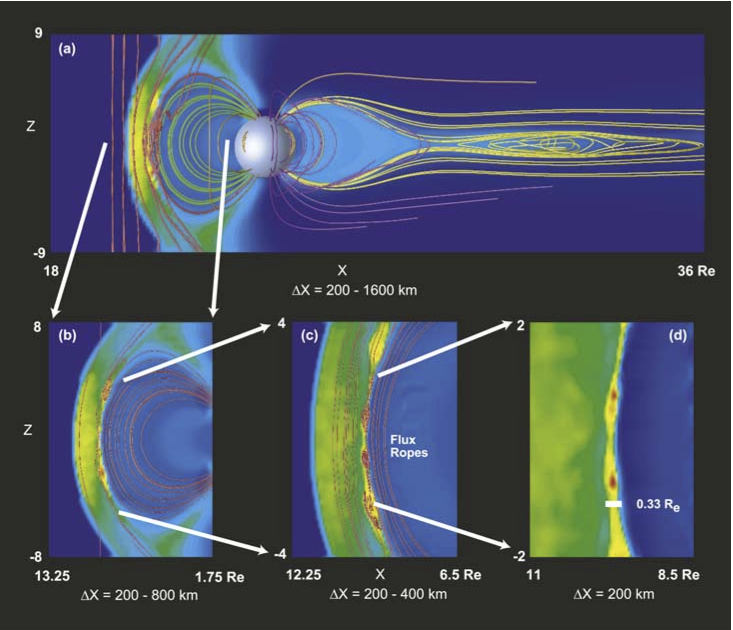
The space environment modeling group at the University of Washington has over the last decade developed a three-dimensional multi-fluid code simulating the interaction of the terrestrial magnetosphere with the solar wind.
With the development of the multi-fluid model, the evolution of different sources of ions could be tracked and this work lead to the first three-dimensional identification of the geopause [Winglee, 1998], as well as a description of the relative roles of ionospheric and solar wind plasma in populating the magnetosphere [Winglee, 2000], the importance of ionospheric mass outflows in mass loading of the magnetosphere, the generation of the Harang discontinuity, and the cross polar cap potential [Winglee et al., 2002; 2004]. Subsequent modeling has demonstrated that the timing and spatial distribution of the heavy ion outflows from the model are consistent with IMAGE/HENA data [Winglee et al., 2005]
In addition to multi-fluid modeling of the terrestrial magnetosphere, single-particle tracking using time-dependent global magnetic and electric fields have been used by Cash et al. [2010] to investigate the generation of the ring current from ionospheric outflows during an internally driven substorm, as well as modeling the 10 March 1998 storm to investigate storm time acceleration, injection and trapping mechanisms associated with the formation of the ring current.

